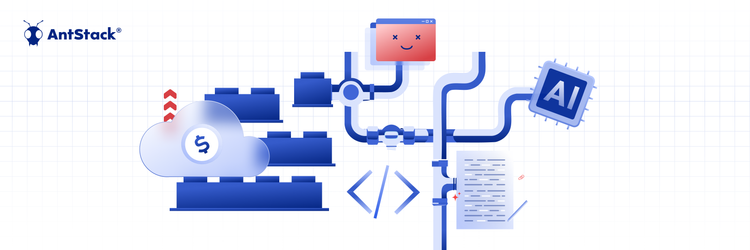Rethinking Cloud Spend: Modernization Over Short-Term Cuts
Serverless happens to be the evolution of infrastructure as a public cloud platform that removes server maintenance and setup. In addition to Kubernetes, serverless has become the fastest-growing approach to cloud native application development. Serverless architecture is based on the FaaS of Function as a Service. It refers to the fastest-growing ecosystem of different services, which is useful to the software development teams in creating and maintaining the apps faster at the most affordable prices.
Reasons to go serverless
Serverless apps offer plenty of benefits. The developers no longer have to be stressed out about the virtual and physical server maintenance and server provisioning. When it comes to severless, the cloud service provider is capable of handling the maintenance and scaling work, like OS updates with the regular architecture. Devs do not need to be stressed out about resource scaling, instance types, and idle computing costs. It allows them to concentrate on what makes the app unique, along with the potential features that improve the functionality.
The developer teams need to make certain crucial decisions before going serverless. They include development framework selection, testing methodologies, and team staffing. Serverless ensures that cloud development is more reliable, quicker, and reduces failure points on an extensive scale. It creates a trend to optimize what the developer team is coding from scratch and configure the same while extending the same within the infrastructure.
Choosing the architectural approach helps to go a long way as it removes the infrastructure risks as the efficiency bottleneck and the failure points. Thus, the developer needs to focus on the application, thereby leaving the infrastructure provisioning to the FaaS service provider.
When should I go serverless?
It will be a wise decision to go serverless under the following circumstances: Check it out!
The small apps are going to stand the way.
If you have a smaller app with a smaller traffic level, scaling to zero serverless aspects will be affordable. Thus, the server will be available round the clock, 24*7, thereby providing the capabilities to scale to spikes in demand and no-going infrastructure for maintenance. The only problem is that the costs will increase with the increase in the user base. Hence, you should ensure that the functions you are developing for are reasonably small.
Background processing tasks
Background tasks that execute on the schedule or in response to different events can prove to be a good option for different serverless functions. It is inclusive of different web hooks, through which the apps will send different automated event messages through HTTP. You should take the necessary care to ensure that there are no long-running tasks, as the serverless functions are meant to support specific, short-lived executions.
troughs and unpredictable peaks
Serverless architecture is considered to be an effective choice to handle the unknown. If you are having unpredictable troughs and peaks, you should go for the serverless architecture. It ensures that the app will meet them without involving the risks of over-pricing and unused infrastructure.
However, it involves the risks of the runway scale, and thus you might need to spend a lot of money unnecessarily. Hence, you should opt for rate limiting and load shedding, thereby ensuring that the load is not passing the reasonable threshold.
When you should avoid using serverless
Now, we are going to discuss the circumstances under which you should say no to using serverless. Check it out!
Long-running tasks
The majority of serverless platforms are meant to manage short-lived execution. AWS Lambda comes with a maximum 15-minute timeout for different functions. It is known to rule the Lambdas out for the long-running operation. There are a wide assortment of cloud service providers that use the same restrictions. If you have a process that needs more time to execute, serverless functions are not going to be the best option.
The operation can be in the threshold to start. However, you should find that the execution times will creep over the course of time in response to the dependent systems' declining performance and data volume growth.
High and predictable traffic
When you have an app with predictable and higher demand, you should make sure to optimize the architecture by ensuring the proper availability level and reducing costs. It is considered an affordable choice to execute a bunch of various containerized services and add some infrastructure as the app remains busy. There are different solutions for caching and buffering to handle the load differently.
You need more control
Going away from the underlying infrastructure can prove to be a challenging process. It will restrict control over the processing context. Serverless apps are not immune to different performance issues. Hence, the options to address are restricted to the majority of the operating context. Henceforth, the serverless architecture is considered to be a less appropriate option with higher compute and memory needs. So, you will be adjusting the memory to a specific available function.
Serverless architecture will be inappropriate for the specific use cases in which response times and performance are only important. The serverless apps come with longer cold startup times and the time it takes to get the environment running as the function gets invoked for the first time. After the startup, the performance can become sluggish with primary external dependencies and massive functions.
Under such circumstances, certain strategies should be added to mitigate the cold startup times, like the use of Lambda provisioned concurrency and the pre-warmed function feature. There are scopes to mitigate the performance problems with the tweaking of code footprint and memory size.
The serverless companies, offering serverless application development services should consider opting for a serverless app as they try to opt for small and medium-sized apps with unpredictable loads. Choosing a serverless approach is worth consideration as it requires ample fail-fast and faster experimenting.









